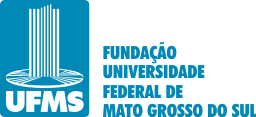Use este identificador para citar ou linkar para este item:
https://repositorio.ufms.br/handle/123456789/12750Registro completo de metadados
| Campo DC | Valor | Idioma |
|---|---|---|
| dc.creator | Claudinéia da Silva | - |
| dc.date.accessioned | 2025-10-07T15:03:05Z | - |
| dc.date.available | 2025-10-07T15:03:05Z | - |
| dc.date.issued | 2025 | pt_BR |
| dc.identifier.uri | https://repositorio.ufms.br/handle/123456789/12750 | - |
| dc.description.abstract | The teaching of the Brazilian Sign Language (Libras) contributes to the construction of a school for all, which in turn aims at building an inclusive society. As a teacher in the municipal education network of Três Lagoas, Mato Grosso do Sul, this researcher observed that, although there is a municipal law mandating the adoption of measures to include Libras in the school curriculum, there are still persistent difficulties regarding the effective implementation of its teaching in Early Childhood Education Centers (CEIs). This observation motivated the development of the following research question: How have the CEIs in the municipality of Três Lagoas been working to incorporate Libras into their curricula? The general objective of the research was to understand how these centers have promoted—or organized themselves to promote—linguistic accessibility through Libras, as well as to identify the main challenges faced in this process. The investigation was grounded in theoretical frameworks related to school inclusion and linguistic accessibility for deaf children, and it sought to present an overview of the regulations governing special education and the teaching of deaf students, linking these guidelines to elements that foster child development in the initial stage of basic education. Data collection occurred in two stages: analysis of the Pedagogical Political Projects (PPPs) of two CEIs indicated by the Municipal Department of Education (SEMEC), and the conduction of discussion groups with teachers in charge of Group 5 classes. Data analysis was guided by thematic axes predefined based on the specific objectives of this research, namely: (1) Organization of pedagogical work; (2) Conceptions of school inclusion; and (3) Practices aimed at linguistic accessibility. The results revealed that linguistic accessibility for deaf children is still at an early stage in the CEIs, with significant challenges to the integration of Libras into the curricula. It was also possible to understand the conceptions of inclusion expressed by teachers and the pedagogical practices that support them. It was therefore concluded that, although there is a recognized understanding of the importance of Libras for inclusion, the CEIs analyzed have not yet structured, in a planned and organic way, its incorporation into pedagogical practices that effectively promote the linguistic accessibility of deaf children. | - |
| dc.language.iso | pt_BR | pt_BR |
| dc.publisher | Fundação Universidade Federal de Mato Grosso do Sul | pt_BR |
| dc.rights | Acesso Aberto | pt_BR |
| dc.subject | Educação Infantil | - |
| dc.subject | Inclusão Escolar | - |
| dc.subject | Acessibilidade Linguística. | - |
| dc.title | ACESSIBILIDADE LINGUÍSTICA EM CENTROS DE EDUCAÇÃO INFANTIL DE TRÊS LAGOAS/MS: UM ESTUDO A PARTIR DO PROJETO POLÍTICO PEDAGÓGICO E DAS PERSPECTIVAS DE PROFESSORES | pt_BR |
| dc.type | Dissertação | pt_BR |
| dc.contributor.advisor1 | Gilson Gomes Coelho | - |
| dc.description.resumo | O ensino da Língua Brasileira de Sinais (Libras) contribui para a construção de uma escola para todos que, por sua vez, visa uma sociedade também inclusiva. Como professora da rede municipal de ensino de Três Lagoas-MS, esta pesquisadora observou que, embora exista uma lei municipal que determina a adoção de medidas para a inclusão da Libras no currículo escolar, ainda persistem dificuldades quanto à efetiva implementação do seu ensino nos Centros de Educação Infantil (CEIs). Essa constatação motivou a elaboração da seguinte questão de pesquisa: como os CEIs do município de Três Lagoas vêm trabalhando para inserir a Libras em seus currículos? O objetivo geral da pesquisa foi compreender como esses centros têm promovido, ou se organizado para promover a acessibilidade linguística por meio da Libras, além de identificar os principais desafios enfrentados nesse processo. A investigação fundamentou-se em referenciais teóricos voltados à inclusão escolar e à acessibilidade linguística de crianças surdas, e buscou apresentar um panorama das normativas que regem a educação especial e o ensino de estudantes surdos, articulando essas diretrizes com os elementos que favorecem o desenvolvimento infantil na etapa inicial da educação básica. A coleta de dados ocorreu em duas etapas: análise dos Projetos Políticos Pedagógicos (PPPs) de dois CEIs indicados pela Secretaria Municipal de Educação (SEMEC) e realização de rodas de conversa com professores regentes de turmas do Grupo 5. A análise dos dados foi guiada pelos eixos temáticos pré-definidos a partir dos objetivos específicos desta pesquisa, sendo eles: 1) Organização do trabalho pedagógico; 2) Concepções sobre inclusão escolar; 3) Práticas voltadas à acessibilidade linguística. Os resultados evidenciaram que a acessibilidade linguística para crianças surdas ainda se encontra em estágio inicial nos CEIs, com desafios significativos para a inserção da Libras nos currículos. Também foi possível compreender as concepções de inclusão manifestadas pelos docentes e as práticas pedagógicas que as sustentam. Concluiu-se, portanto, que embora exista um reconhecimento da importância da Libras para a inclusão, os CEIs analisados ainda não estruturaram, de forma planejada e orgânica, sua inserção em suas práticas pedagógicas que promovam efetivamente a acessibilidade linguística das crianças surdas. | pt_BR |
| dc.publisher.country | Brasil | pt_BR |
| dc.publisher.initials | UFMS | pt_BR |
| Aparece nas coleções: | Programa de Pós-Graduação em Educação (Câmpus de Três Lagoas) | |
Arquivos associados a este item:
| Arquivo | Tamanho | Formato | |
|---|---|---|---|
| Dissertação Claudinéia da Silva.pdf | 825,3 kB | Adobe PDF | Visualizar/Abrir |
Os itens no repositório estão protegidos por copyright, com todos os direitos reservados, salvo quando é indicado o contrário.

